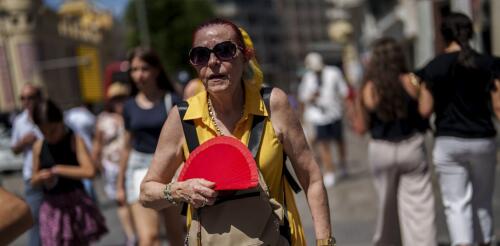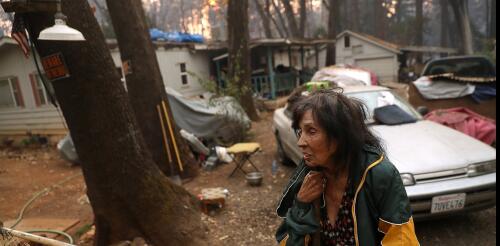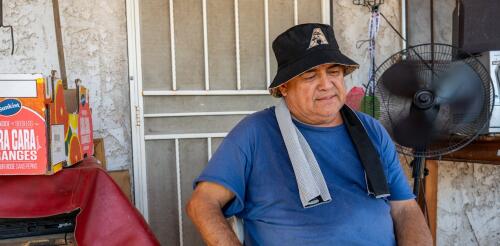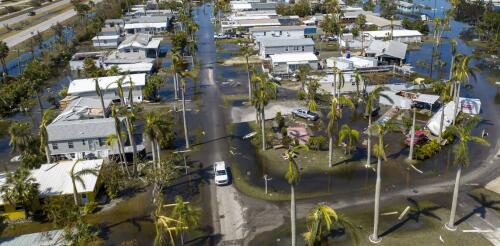Older adults
When summer starts with a stifling heat wave, as many places are seeing in 2024, it can pose risks for just about anyone who spends time outside, whether they’re runners, people who walk or cycle to work, outdoor workers or kids playing sports. Susan Yeargin, an expert on heat-related illnesses, explains what everyone should think about before spending time outside in a heat wave and how to keep yourself and vulnerable family members and friends safe. What risks do people facing running, walking or working outside when it’s hot out? The time of day matters if you’re going for a run, or if you’re walking or cycling to work during a heat wave. Early risers or evening runners face less of a risk – the Sun isn’t as hot and the air temperature is lower. But if your normal routine is to go for a run midmorning or over lunch, you probably want to rethink exercising in the heat. Pretty much everywhere in the U.S., the hottest part of the day is be...
A deadly heat wave gripped Asia for weeks in spring 2024, sending temperatures in India’s capital region over 120 degrees Fahrenheit (49 Celsius) in May. Campaigning politicians, news announcers and Indian voters waiting in long lines passed out in the oppressive heat. In June, hundreds of people on the Hajj, a Muslim pilgrimage to Mecca, Saudi Arabia, died in searing heat that reached 120 F (49 C) with high humidity. Most of the planet has suffered the dire effects of extreme heat in recent years. Phoenix hit 110 F (43.3 C) or higher for 31 straight days in summer 2023, and Europe saw unprecedented heat that killed hundreds and contributed to devastating wildfires in Greece. Mexico and neighboring regions were sweltering through a dangerous and long-running heat wave in 2024. Regardless of where or when a heat wave strikes, one pattern has been a constant: Older adults are the most likely to die from extreme heat, and the crisis is worsening....
As wildfires burn across the Western U.S., the people in harm’s way are increasingly those least able to protect their homes from fire risks, evacuate safely or recover after a fire. In a new study, we and a team of fellow wildfire scientists examined who lived within the perimeters of wildfires over the past two decades in Washington, Oregon and California – home to about 90% of Americans in the U.S. West exposed to wildfires over that period. Overall, nearly half a million people in California, Oregon and Washington were exposed to wildfires at some point during the past 22 years. Alarmingly, about half the people exposed to wildfires in Washington and Oregon were considered socially vulnerable. While the number of people exposed to fire rose overall, the number of socially vulnerable people exposed more than tripled between the first and second decades. How social vulnerability affects fire risk A variety of factors shape social vulnerability, including wealth,...
Scorching temperatures have put millions of Americans in danger during recent heat waves, with heat extremes hitting states from coast to coast. Phoenix hit 110 degrees Fahrenheit (43.3 Celsius) or higher every day for over three weeks in July 2023. Other major cities, from Las Vegas to Miami, experienced relentless high temperatures, which residents described as “hell on earth.” While the evening news runs footage of miserable sunbathers and joggers dousing themselves with water, these images conceal a growing hidden crisis: the millions of older adults who are suffering behind closed doors. As researchers who study older adults’ health and climate change, we have found that two societal trends point to a potentially dire future: The population is getting older, and temperatures are rising. During the July 2023 heat wave, people gathered at the Justa Center, a day cooling center in downtown Phoenix for people age 55...
Warm water in the Atlantic Ocean and Gulf of Mexico can fuel powerful hurricanes, but how destructive a storm becomes isn’t just about the climate and weather – it also depends on the people and property in harm’s way. In many coastal cities, fast population growth has left more people living in areas at high risk of flooding. I am a geographer who studies the human dimensions of climate change and natural disasters. My research and mapping with colleagues shows that socially vulnerable communities – those least able to prepare for disasters or recover afterward – tend to be concentrated in areas that are more susceptible to flooding, particularly on the Gulf Coast. Larger, vulnerable populations Nearly 40% of the U.S. population lives in a coastal county today. Many of these areas are increasingly exposed to disasters, including hurricanes and high tide flooding that has been worsened by sea level rise. The Gulf of Mexico region, in particular,...




